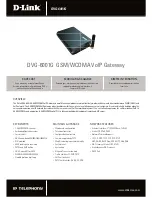
M2M
Cellular
Gateway
Index
skipping
is
used
to
reserve
slots
for
new
function
insertion,
when
required.
105
3.7
IPv6
The
growth
of
the
Internet
has
created
a
need
for
more
addresses
than
are
possible
with
IPv4.
IPv6
(
Internet
Protocol
version
6
)
is
a
version
of
the
Internet
Protocol
(IP)
intended
to
succeed
IPv4,
which
is
the
protocol
currently
used
to
direct
almost
all
Internet
traffic.
IPv6
also
implements
additional
features
not
present
in
IPv4.
It
simplifies
aspects
of
address
assignment
(stateless
address
auto
‐
configuration),
network
renumbering
and
router
announcements
when
changing
Internet
connectivity
providers.
This
gateway
supports
various
types
of
IPv6
connection
(Static
IPv6
/
DHCPv6
/
PPPoEv6
/
6to4
/
6in4).
Please
contact
your
ISP
the
type
of
IPv6
is
supported
before
you
proceed
with
IPv6
setup.
Static
IPv6
Static
IPv6
does
the
same
function
as
static
IPv4.
The
static
IPv6
provides
manual
setting
of
IPv6
address,
IPv6
default
gateway
address,
and
IPv6
DNS.
In
above
diagram
depicts
the
IPv6
IP
addressing,
type
in
the
information
provided
by
your
ISP
to
setup
the
IPv6
network.
DHCPv6
DHCP
in
IPv6
does
the
same
function
as
DHCP
in
IPv4.
The
DHCP
server
sends
IP
address,
DNS
server
addresses
and
other
possible
data
to
the
DHCP
client
to
configure
automatically.
The
server
also
sends
a
lease
time
of
the
address
and
time
to
recontact
the
server
for
IPv6
address
renewal.
The
client
has
then
to
resend
a
request
to
renew
the
IPv6
address.
















































